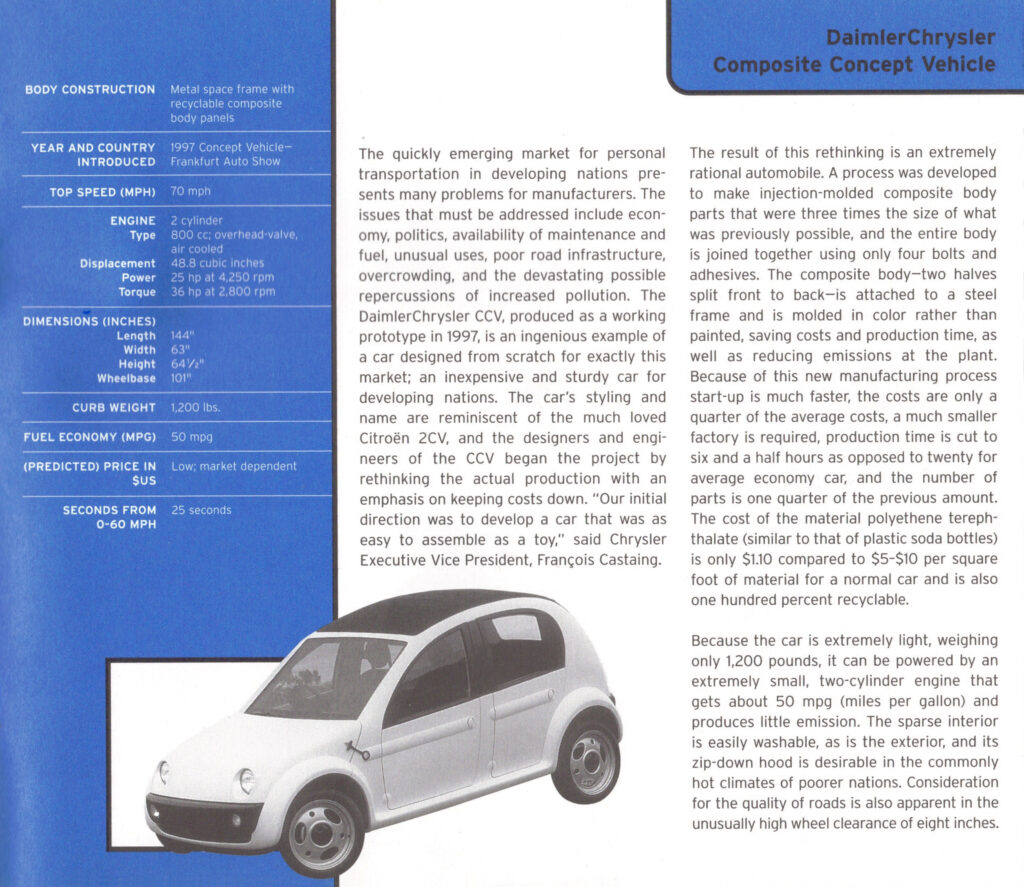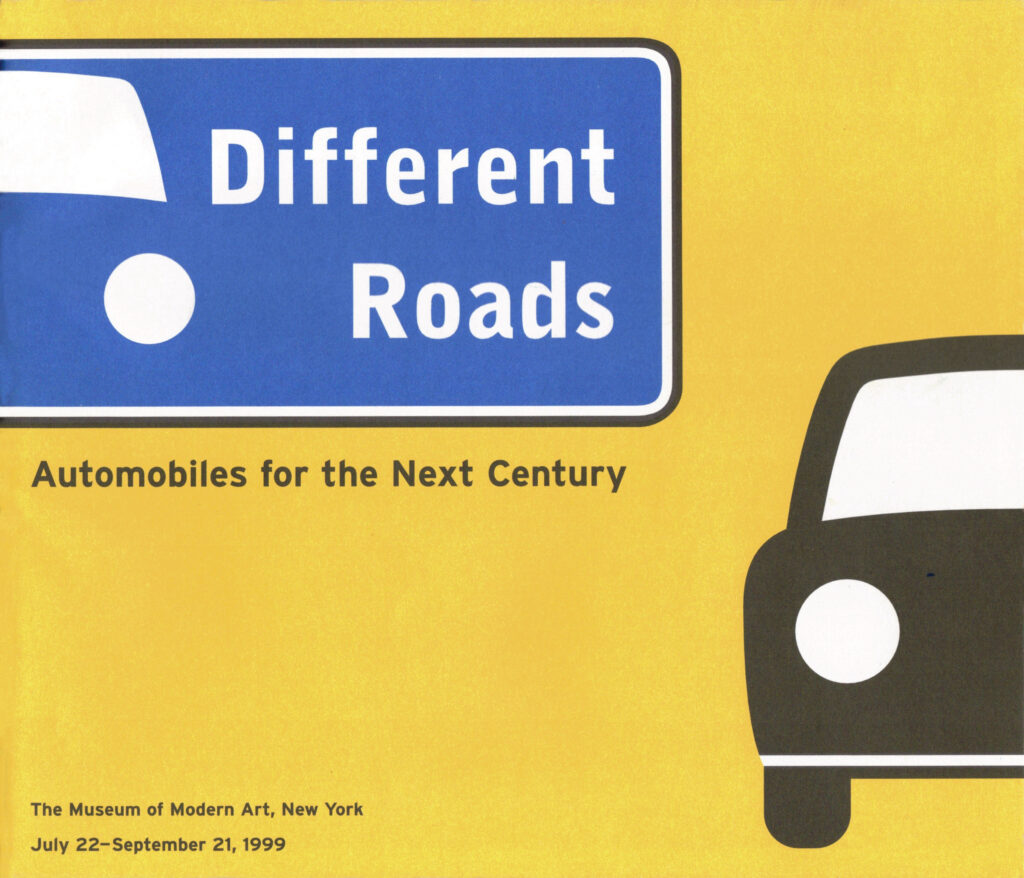CCV at MoMA Brochure

Daimler Chrysler’s Composite Concept Vehicle (CCV) was their take on a what a next-generation 2CV destined for the Asian market might be. Designed in the mid 1990s, it explored a new means of construction suitable for developing nations.
The CCV featured an injection-molded plastic body with a fabric roof and an air-cooled 2-cylinder engine driving the front wheels. It was designed to be cheap and easy to manufacture in countries with poor transportation and utility infrastructure and minimal access to capital and skilled labor. The car’s simplicity would have ensured longevity and reliability in harsh conditions and made it easy for owners to do their own maintenance and repair work.
Logistical problems with the injection molding process combined with the rationalization that occurred following Chrysler’s 1998 takeover by Daimler-Benz effectively killed the project. However the techniques developed to manufacture CCV body were ultimately utilized in the production of plastic hardtops for the Jeep Wrangler.
Although the CCV project was essentially terminated in 1998, prototypes were shown at a number venues venues, including one at the Museum of Modern Art in New York City in 1999 called “Different Roads – Automobiles for the Next Century”. It ran from July 22 — September 21.


The other choices for next century automobiles on display at the MoMA exhibit included;
- General Motors EV1
- Honda VV (the prototype of the first generation Insight)
- Toyota Prius
- Fiat Multipla Bipower
- Daimler Chrysler Smart Car
- Ford Ka
- Audi AL2
- BMW/Rover Group Mini Millennium Concept Car
We are pleased to have recently acquired the MoMA brochure from Ronald Kienhuis who attended the exhibit and have added it to our archives. You can view the entire brochure here: https://www.sugarsync.com/pf/D1866000_192_393510367

You can read more about the CCV here: https://citroenvie.com/a-new-book-about-the-2cv-inspired-ccv-the-china-car/

I hadn’t known the Chrysler China car was shown at the MOMA until this article. I was a participant in that program for the first year of its existence. Being Dupont Automotive Polymers dept Design Programs Mgr during that period of time, I was actively involved from day 1, as I had already helped Chrysler launch their new carline – called the LH series – with their first ever Dupont plastic front fenders on their 3 sedans – the Dodge Intrepid, a Chrysler version, and the top of line LHS style. Those three cars replaced Iacocca’s boxy K car sedans and other larger cars. The CCV – or Chrysler Concept Vehicle – was the brainchild of Francois Castaing, then Chrysler Chf Engr, and a Frenchman, who came over with AMC when Chrysler bought them.
As Francois grew up in a 2CV, his program was set up to explore producing a Chinese version of the Duck to replace the one-lung garden tractor pulling a 4 wheel cart with produce and family on it, which was standard transportation for many Chinese before they got rich, and designed to put the Chinese farmer on better wheels a la the Deux Chevaux. This internal quiet program started up at their New Liberty facility right down the street from our Dupont field office, where I set up our plastics application development lab in 1980. First thing they needed was a 2CV to expose their engineering team to the car, so I found them a source thru David Allen, who back then was importing Cits to the US. He sold them a ’57 restored car. Then they managed to break the transaxle at their Chelsea Michigan test track, so I found them a used one for $50, saving them from spending big bucks custom-making new gears for the broken one! (Should have asked for $500!). Six months into the program I walked into their facility and found a ’59 Panhard Dyna Z16 being gone over by an engineer. Turns out Bob Lutz, then Chrysler CEO and Swiss, had found the Dyna at an E. Coast engineering shop and brought it into the program as another example of a flat twin engine, which is what they were considering. That became another study car in the program. When Daimler swallowed Chrysler later on, Francois wrote a book about the entire program which is an interesting story from the bowels of the US auto biz. (Reviewed in Citroenvie back in Nov. 2021: https://citroenvie.com/a-new-book-about-the-2cv-inspired-ccv-the-china-car/).